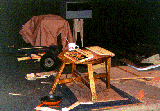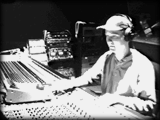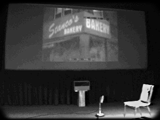|
The How
It's Done |
The Moves
Track is a layer of sound that recreates the
clothing rustle of actors as they walk, run and
move.
Listen to your
pants (or dress) when you walk around the room;
reach for a glass or wave your hand - you make
noise all the time! People tend to scratch, pat and
touch themselves and each other - the moves track
covers these too.
Without the moves
track, the Foley would sound sterile and too
perfect. Moves is like butter on your bread: it
provides a smooth background layer. While
incredibly subtle, the moves track serves to fill
in the gaps in the sound when the picture is cut or
ADR is used.
How
To Record A Moves Track...
How
To Perform A Moves Track...
The
End Result...
It also gives the
Foley Artist a chance to really feel the film
(until you have sat down and moved through the
film, you can't really know it,) which helps later
on when you perform the footsteps!
|
||||||||||||||||||
|
© Philip Rodrigues Singer M.P.S.E. philly@marblehead.net |
|||||||||||||||||||
 Moves
Moves


